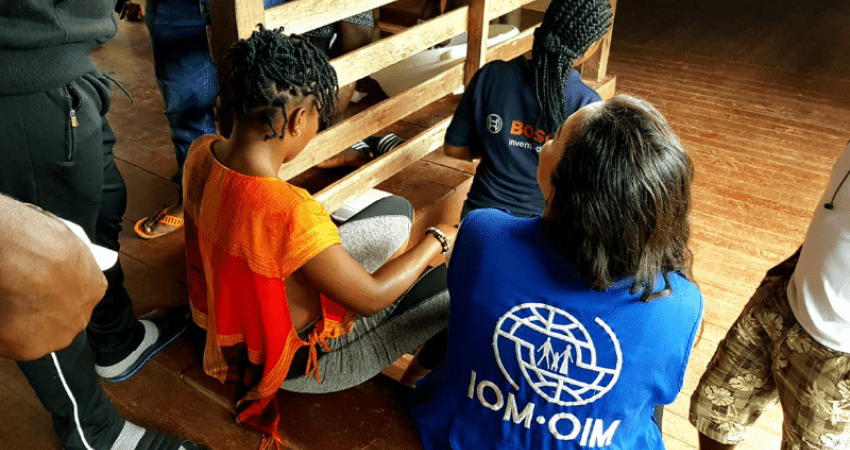IOM publishes the first data from 2019 on the profile of extra-regional migrants in Panama

Los Planes, Panama. In the first six months of 2019, Panama has received 34% more migrants from South America than it received in all of 2018. Every day, an average of 120 people arrive at the Temporary Humanitarian Aid Station (ETAH) located on the border between Costa Rica and Panama. In this context, IOM carried out a second round of surveys to track the flows of extra-regional migrants, using the DTM (Displacement Tracking Matrix) methodology.
“This work is extremely important because it enables a detailed understanding of migration trends and the different profiles, contexts, and vulnerabilities of extra-regional migrants. The data will be a tool for evidence-based decision-making. From the perspective of IOM, providing data on migrants to the actors involved in managing this situation is key for promoting orderly and safe migration management and appropriate assistance for these people,” explained Karla Picado, Information Management/MIS Official of IOM’s Regional Migration Program.
Of the 316 extra-regional migrants surveyed between June 17 and 22, 28% are women and 72% are men. An equal percentage of migrants, 32%, come from each Cameroon and Haiti, followed by Cuba with 15% and India with 9%. The remaining people come from countries such as Mali, Mauritania, Guinea, Eritrea, Bangladesh, Senegal, the Democratic Republic of the Congo, and Angola.
One of the principal findings is that the surveyed migrant population has a high level of education: 33% completed secondary school, 22% have non-university higher education, 30% have a university degree, and 8% have a graduate degree. Regarding their employment situation, 76% of participants were working before they left, as paid workers (44%) or operating their own businesses (32%).
The people surveyed have left their countries of origin for various reasons. The migrants from Caribbean countries stated that their primary reasons for leaving their countries of origin were a lack of economic opportunities and unemployment (36%), political instability and persecution (20%), and limited access to basic services such as education, healthcare, and transportation (9%). On the other hand, political instability and persecution (41%), wars or armed conflicts (25%), and insecurity and indiscriminate violence (22%) were identified as the primary push factors for migrants from African and Asian countries.
The United States is the destination country for 68% of the migrants surveyed, Canada for 7%, and Mexico for 14%; 11% have not yet decided on a destination country. Socioeconomic conditions were identified by 48% of people as the primary factor that influenced this choice, followed by political stability and ease of access to asylum procedures (39%). Family reunification, meanwhile, is the primary goal for 13% of those surveyed.
This activity was made possible by financing from the Bureau of Population, Refugees, and Migration (PRM) of the Department of State of the United States, within the framework of the Regional Migration Program: Mesoamerica-The Caribbean.
For more information, contact Karla Picado at kpicado@iom.int
